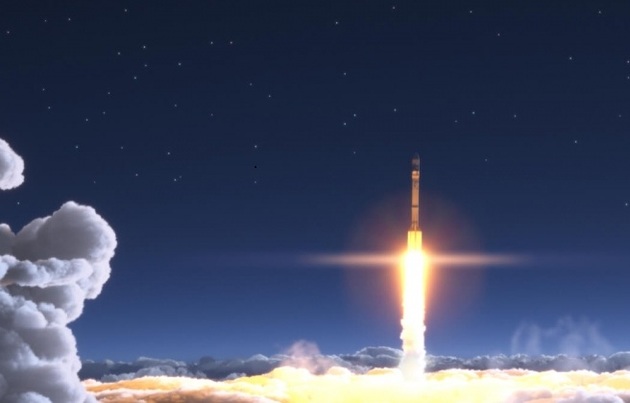In recent years, a number of major world powers have stepped up their military uses of space. While the weaponization of space has long been a touchy subject, it seems that now the gloves are off. Аero Time asks: could space be the next battlefield?
The weaponization of space
The debate over the militarization of space is not new. Think back to World War Two and the V2 rockets that Nazi Germany rained down upon Britain. These weapons were designed and co-developed by the German engineer (and future deputy administrator of NASA) Wernher von Braun, who later became known as the Father of Rocket Science. Once the war was over, the globe’s two superpowers, the United States and the Soviet Union, spent huge amounts of money during the Cold War in a bid to deploy military technology in space.
But the race for space weaponization came to a somewhat premature end. In 1967, in the midst of the race to land on the moon, the Soviet Union, the US and the UK signed the Treaty on Principles Governing the Activities of States in the Exploration and Use of Outer Space, including the Moon and Other Celestial Bodies, known as the Outer Space Treaty.
That agreement, later ratified by 110 nations, prohibits the installation of nuclear weapons or any other form of weapon of mass destruction in Earth’s orbit, including stockpiling them on the Moon or any other celestial body, or in outer space.
That Treaty was at least partly responsible for keeping Earth's orbit free from any conflict for more than half a century. Its principles meant that space was accessible to all countries, without any national claim. Therefore, the use of space by the military was, at least on paper, limited to observation and communication applications. The military satellites launched during the past 50 years were, it was said, only intended to keep the peace.
With the International Space Station about to retire, one of the last areas of international space cooperation will come to an end. More than a symbol, it could also mark the beginning of an era when the hegemony of the West over space will be challenged. Russia has already announced that it will launch its own space station. And the competition is unlikely to limit itself to the scientific domain.
Meanwhile, a maneuver supposedly executed by Russia was recently denounced by France. Defense Minister Florence Parly claimed that, in 2017, the Luch satellite, also known as Olymp-K, attempted to spy on the Franco-Italian satellite Athena-Fidus. The latter provides high-speed and secure telecommunications services by satellite to the military forces and emergency services of both nations.
“As Athena-Fidus continued to rotate quietly above the earth, a satellite approached it, up close, a little too close. So close that one would have really believed that it was trying to capture our communications,” Parly said. “Trying to listen to your neighbors is not just unfriendly, this is called an act of espionage.” At the time, the French Air Force acknowledged having previously identified similar spacecraft approaching French military satellites in 2012, 2013 and 2015.
China, long left out of international space cooperation over fears of espionage, could be the next big military player in Earth’s orbit. In April 2021, the US Office of the Director of National Intelligence published a report in which it warned of several weapons being developed by China capable of targeting the satellites of the US and their allies. “Beijing is working to match or exceed US capabilities in space to gain the military, economic, and prestige benefits that Washington has accrued from space leadership,” the report stated. “Counterspace operations will be integral to potential military campaigns by the PLA [People's Liberation Army, China’s military - ed. note], and China has counter-space weapons capabilities intended to target US and allied satellites.”
The emergence of new doctrines
In July 2019, a year after the Olymp-K incident was made public, French President Emmanuel Macron announced the creation of a space command within the French Air Force, which would be known as the Air and Space Force. The new doctrine aims to protect France’s space assets against emerging threats.
That decision echoed a similar move across the Atlantic several months earlier. In February 2019, US President Donald Trump signed the Space Policy Directive 4, which established a Space Force as a sixth branch of the US Armed Forces. The directive cited the increasing space capabilities of its “potential adversaries”.
The two space forces launched their first joint space exercise, called AsterX, in March 2020. Among the situations studied was a satellite being approached for espionage. To counter such threats, France could acquire patrol satellites equipped with cameras and powerful lasers to keep overly curious spacecraft at bay. A prototype, called Yoda, should be launched by 2023.
Japan also created its own Space Operations Squadron in 2020. For now, the squadron consists of just 20 people, with a mission limited to ensuring that Japanese satellites are not damaged by space debris or meteorites. However, the Government plans to expand its workforce and operational scope in the coming years.
The creation of so-called Space Forces around the world raises the very real prospect of space becoming a new battlefield as global powers work to preserve their strategic interests. It’s not quite Star Wars but it will only grow as both military and civilian sectors rely increasingly on satellites.






